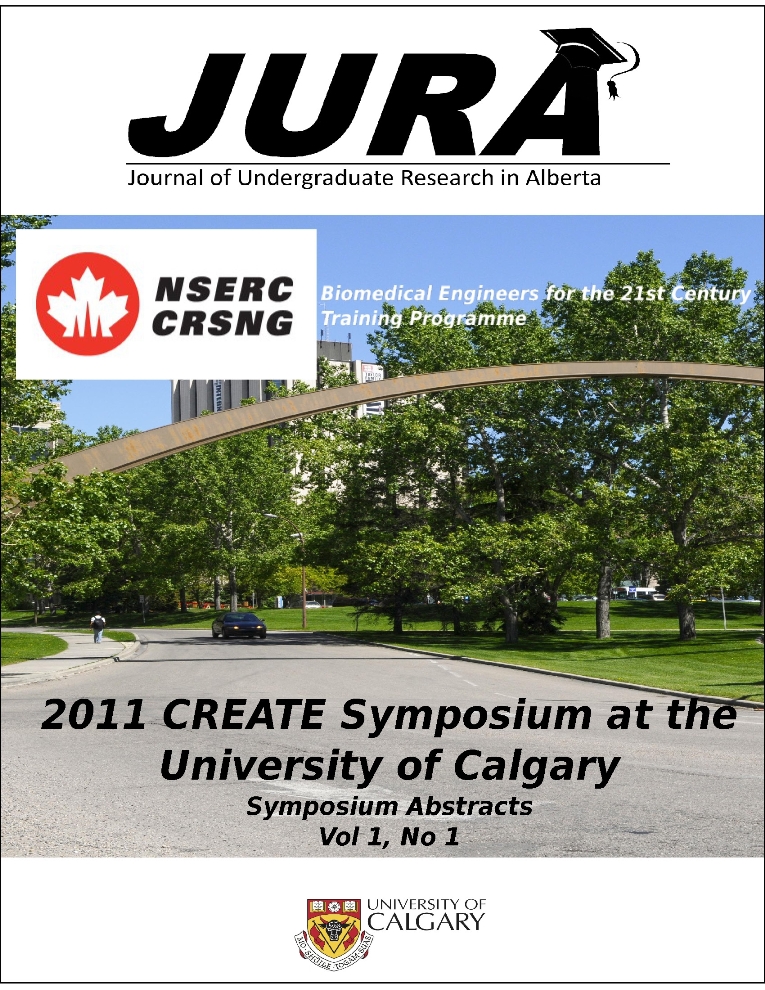Effect of disturbed flow on nanoparticle uptake in endothelial cells
Keywords:
Endothelial Cells, Nanoparticle UptakeAbstract
n recent years, the focus of nanotechnology research has shifted from industrial applications, such as cosmetic or oil & gas (1,2), to those with a greater impact on medicine. Researchers are attempting to harness the ability of nanoparticles (NPs) to target specific areas of the body for the purpose of drug delivery or medical imaging (3,4). In order to predict how nanoparticles will accumulate once they enter the blood stream, a greater understanding of the effect of fluid flow on cellular interactions with NPs is required. Current research examines the effect of shape, size, and density on NP uptake (5), but very little attention is paid to the way in which flow disturbances affect how NPs accumulate. Disturbed flow regimes are characteristic in many biological systems in areas of vascular branching or curvature, regions of new vessel growth or in the presence of atherosclerotic plaques (6). In this study, a sudden expansion parallel plate flow chamber was used to examine the effects of flow rate (shear stress) as well as flow pattern on the uptake of NP by human umbilical vein endothelial cells (HUVEC). Fluorescence microscopy was used to image and quantify the presence of NPs following 30 minutes of exposure. As previous findings suggest (7), an increase in shear stress resulted in a decrease in NP uptake. Statically grown cells subject to short term flow and NP exposure exhibited equal accumulation in regions of disturbed and laminar flow, while preconditioning of HUVEC to flow for 24 hrs resulted in a difference in uptake between the two flow regimes. The results suggest that prolonged exposure to specific flow patterns may cause physiological changes that affect NP uptake. Such observations are important to ensure that in vitro studies are accurate predictors of NP behavior in biological models and warrant further exploration.
Downloads
References
2. Ju, B., Fan, T., and Ma, M., “Enhanced oil recovery be flooding with hydrophilic nanoparticles ”, China Particuology Vol. 14 Iss. 1, 2006. pp. 41-46.
3. Dobson, J., “Magnetic Nanoparticles for Drug Delivery”, Drug Development Research Vol. 69, 2006. pp. 55-60.
4. Fang, C. and Zhang, M., “Multifunctional magnetic nanoparticles for medical imaging applications”, Journal of Material Chemistry Vol. 19, 2009. pp. 6528-6266.
5. Toy, R. et al, “The effects of particle size, density and shape on margination of nanoparticles in microcirculation”, Nanotechnology Vol. 22. 2011.
6. Chiu, J. and Chein, S., “Effects of Disturbed Flow on Vascular Endothelium: Pathophysiological Basis and Clinical Perspectives”, Physiological Reviews Vol. 91, 2011. pp. 327-387.
7. Lin. A et al, “Shear-regulated uptake of nanoparticles by endothelial cells and development of endothelial-targeting nanoparticles”, Journal of Biomaterials Medical Research Vol.93 Iss. 3, 2010. pp. 833-842.
Downloads
Published
Issue
Section
License
Authors retain all rights to their research work. Articles may be submitted to and accepted in other journals subsequent to publishing in JURA. Our only condition is that articles cannot be used in another undergraduate journal. Authors must be aware, however, that professional journals may refuse articles submitted or accepted elsewhere—JURA included.


